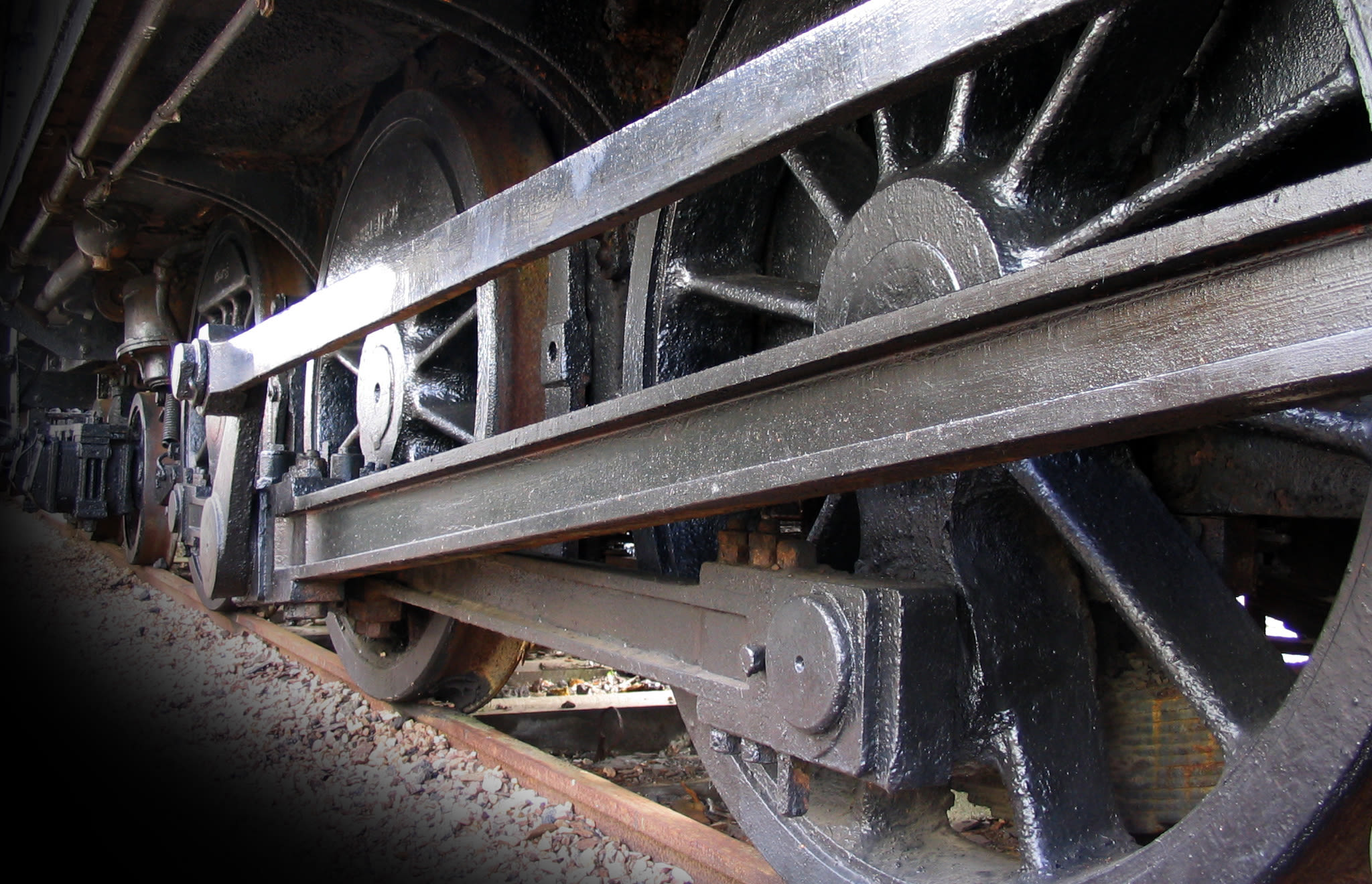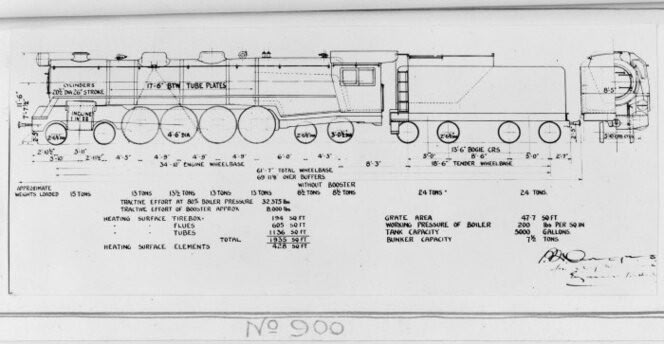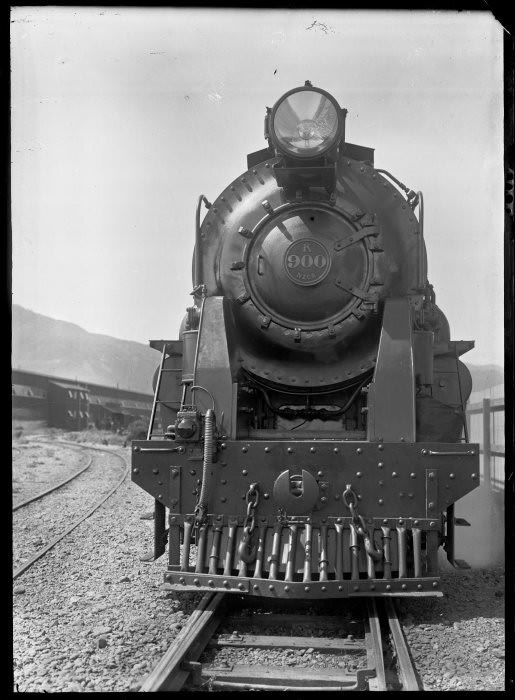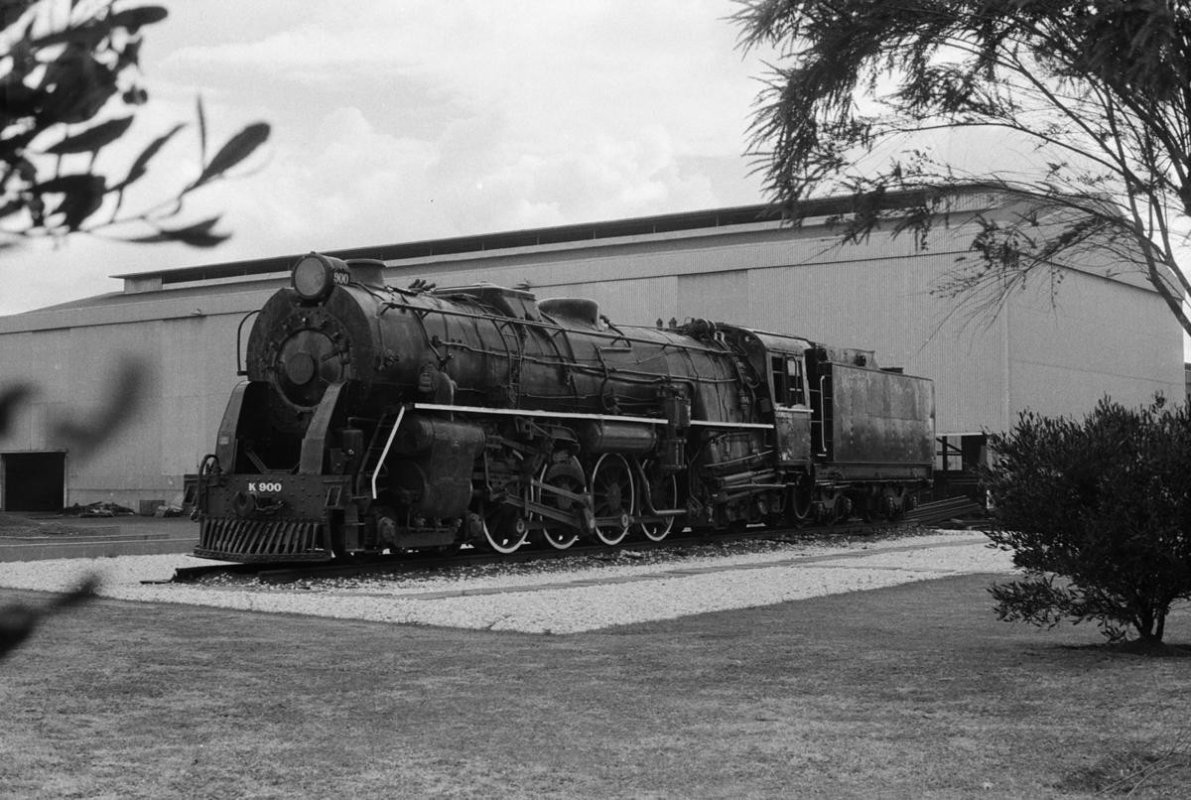The Arrival of a MOTAT Icon

By Hayley McCormack
Many people are familiar with K 900 locomotive, which was on display at MOTAT’s Great North Road site for many years, but how many know the story of its journey to MOTAT?
The New Zealand designed and constructed K 900 steam locomotive, was built in 1932 at the Hutt Workshops of New Zealand Railways, Wellington. It is the largest non-articulated steam locomotive ever operated by New Zealand Railways (NZR). The K class was internationally recognised as a very noteworthy machine and was regarded as the peak of railway mechanical engineering in New Zealand.

Blueprint plan for K class steam locomotive, New Zealand Railways no 900, 4–8–4 type. Ref: APG-1352–1/2-F. Alexander Turnbull Library, Wellington, New Zealand.
The K class locomotive is a fine example of New Zealand innovation, combined with the most successful British and American engineering features. The designers, NZR’s Chief Mechanical Engineer, P R Angus and Chief Draughtsman, R J Gard, led a highly specialised and experienced team. They worked to a brief that included designing a machine that was capable to work with New Zealand’s very tight loading gauge. Due to this, the class has been described in the technical press in America as “easily the best-designed locomotive operating on [narrow] gauge to be found anywhere”. The design also took into consideration that the axle loading did not exceed 14 ton, this was to ensure it was suitable for bridges and tracks in the central North Island. What resulted was an engine being produced that had tractive power fifty percent higher than the most powerful conventional locomotives at the time, the prolific Ab class.
Serving as the K class prototype, K 900 led the way for a further 29 locomotives of this class to be produced — it is now the most complete member of the class preserved. Three were used as stationary boilers at Hutt Workshops, of which two (K 911 and K 917) were preserved. These are now held at Mainline Steam, Plimmerton and Steam Incorporated, Paekakariki respectively, whilst the third was scrapped for parts.

Front view of “K” 900 steam locomotive (4–8–4 type) at Hutt Railway Workshops, 1932. Ref: APG-2039–1/2-G. Alexander Turnbull Library, Wellington, New Zealand.
K 900’s working life saw the locomotive first based in Auckland from late 1932 till 1952, where it was then transferred to Frankton Junction in the Waikato, after the arrival of Ja class locomotives from North British Locomotive Company in Glasgow The locomotive continued its service at Frankton from 1952 till 1965, operating mainly in Auckland, Rotorua and Taumaranui districts.
It had a few minor modifications during its service such as, boilers being swapped out regularly and design changes. These included the smoke box being changed in 1935 and modifications to the original dished front with the protruding headlight, being replaced by a flat design with a recessed headlight. The locomotive was converted to oil firing in March 1950, along with work on the air pumps that supply air for the brakes. Where a cross compound air pump replaced the original twin pumps at the front of the locomotive.
The K class were used predominately as heavy freight and express passenger trains. They were well known for their dramatic sights, when running on the mountainous parts of the North Island Main Trunk and on the Marton — New Plymouth Line around Wanganui.
Dieselisation in the North Island ended the use of locomotives run by steam in December 1967. K 900 was withdrawn from service prior to this in 1965 due to condition issues and was stored at Frankton Junction until 1969. Whilst in storage, the locomotive was donated to MOTAT by New Zealand Railways. Due to space and logistical issues at the time, after a considerable period located outside K 900 was placed on display at Pacific Steel, Otahuhu. Although this was a place that locomotives were usually scrapped, Pacific Steel agreed to display the K 900 and restored it to its former glory. The public were able to view the locomotive from its main gates.

K 900 on display at Pacific Steel before the move to MOTAT. Les Downey. 1972–1976. Photograph of locomotive K 900, 14–1712. Walsh Memorial Library, The Museum of Transport and Technology (MOTAT).
The arrival of K 900 to MOTAT was a highly anticipated event. On 1st December 1975, MOTAT arranged for K 900 to be delivered. The shipping company, Dales Freightways managed to acquire a very sophisticated, Italian built trailer to undertake the transport of the locomotive. The move was sponsored by Choysa Tea.
The logistics involved with moving a large locomotive from one side of the city to the other was no small feat. K 900 was first shunted on 400 feet of specially laid track, to move the locomotive from its display at the steel works to Otahuhu yard. From there it was shunted to Parnell, where it remained for 17 days before continuing its journey to Jellicoe Wharf, Ports of Auckland. It was hauled by the diesel electric class leader engine De 501. Once at Jellicoe Wharf on 19th December, K 900 was lifted by a floating crane called Hikanui, onto a transporter for its road passage to MOTAT.

K 900 locomotive being towed to MOTAT by diesel engine: CHOYSA tea banner attached. Les Downey. 1972–1976. Photograph of locomotive K 900, 14–1369. Walsh Memorial Library, The Museum of Transport and Technology (MOTAT).
Early on the 20th of December K 900 made its expedition to MOTAT. The route of K 900’s journey was promoted on Choysa tea advertisements, resulting in thousands of people lining the streets, with many following the locomotive on its journey through the city to Western Springs. Sitting high up on the transporter, K 900 was a spectacular sight. Visitors paid admission at MOTAT Western Springs to see the locomotive arrive at its new home. The event was also broadcasted live by Merv Smith for Radio IZB. K 900’s unloading involved a ramp which it went down to its new position for display. As it went down the ramp, it broke a white ribbon signalling the beginning of the ceremony celebrating its arrival.
Due to its significance and sheer size K 900 locomotive has been one of MOTAT’s most popular exhibits. It has delighted visitors for many years and has become a MOTAT icon.
Please note: Due to the ongoing care and preservation required for K 900 the locomotive is currently off display and has been relocated to MOTAT’s Railway workshop at the Meola Road site.
References:
Engineering New Zealand. Hutt Railway Workshops. Accessed Date 7th April 2020. Retrieved from: https://www.engineeringnz.org/our-work/heritage/heritage-records/hutt-railway-workshops/
Engineering New Zealand. K Class Locomotive. Accessed Date 7th April 2020. Retrieved from: https://www.engineeringnz.org/our-work/heritage/heritage-records/k-class-locomotive/
MOTAT LOCOMOTIVES.The Locomotive Collection of Auckland’s Museum of Transport and Technology by Philip Wrigley, Richard Croker & Sean Millar. Accessed Date 7th April 2020. Retrieved from: Physical Copy.
Wikipedia. NZR K Class (1932). Accessed Date 7th 2020. Retrieved from: https://en.wikipedia.org/wiki/NZR_K_class_(1932)
Wikipedia. NZR K Class (1932). Accessed Date 7th 2020. Retrieved from: https://en.wikipedia.org/wiki/New_Zealand_Railways_Corporation
Cite this article
McCormack, Hayley. The Arrival of a MOTAT Icon. MOTAT Museum of Transport and Technology. First published: 15 May 2020. URL www.motat.nz/collections-and-stories/stories/the-arrival-of-a-motat-icon